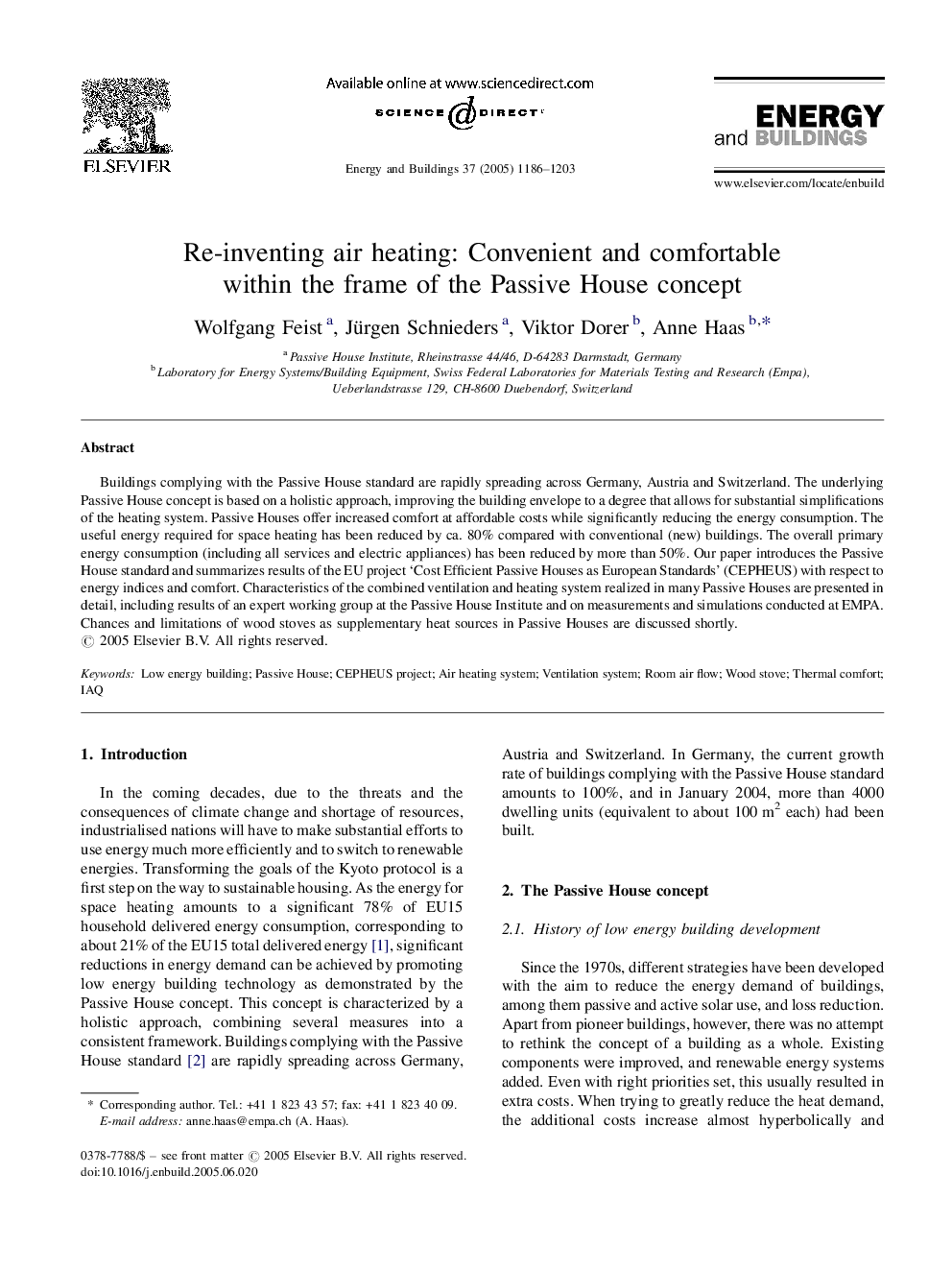| Article ID | Journal | Published Year | Pages | File Type |
|---|---|---|---|---|
| 10286382 | Energy and Buildings | 2005 | 18 Pages |
Abstract
Buildings complying with the Passive House standard are rapidly spreading across Germany, Austria and Switzerland. The underlying Passive House concept is based on a holistic approach, improving the building envelope to a degree that allows for substantial simplifications of the heating system. Passive Houses offer increased comfort at affordable costs while significantly reducing the energy consumption. The useful energy required for space heating has been reduced by ca. 80% compared with conventional (new) buildings. The overall primary energy consumption (including all services and electric appliances) has been reduced by more than 50%. Our paper introduces the Passive House standard and summarizes results of the EU project 'Cost Efficient Passive Houses as European Standards' (CEPHEUS) with respect to energy indices and comfort. Characteristics of the combined ventilation and heating system realized in many Passive Houses are presented in detail, including results of an expert working group at the Passive House Institute and on measurements and simulations conducted at EMPA. Chances and limitations of wood stoves as supplementary heat sources in Passive Houses are discussed shortly.
Related Topics
Physical Sciences and Engineering
Energy
Renewable Energy, Sustainability and the Environment
Authors
Wolfgang Feist, Jürgen Schnieders, Viktor Dorer, Anne Haas,
